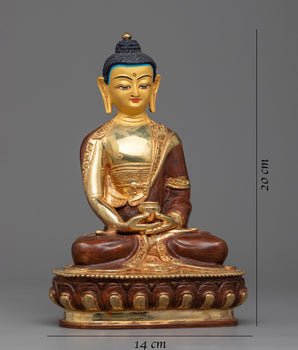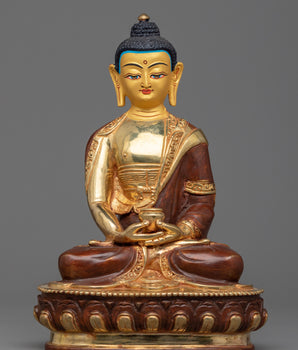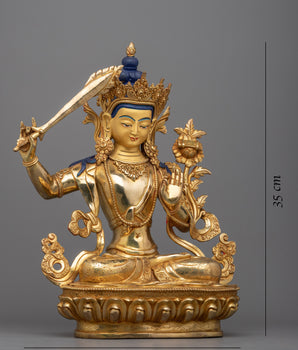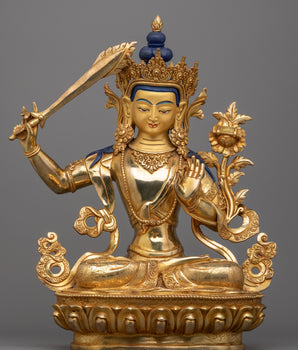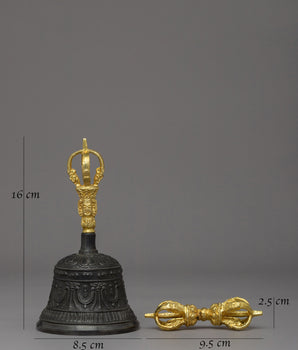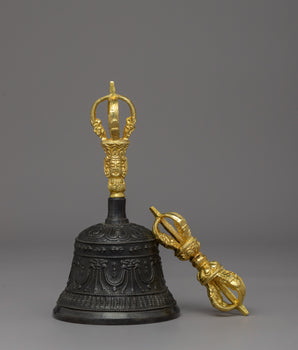Ganesha — The Elephant-God Across Traditions
There are many deities in South Asian religious traditions who command deep devotion, but few enjoy the universal appeal of Ganesha (also spelled Ganesh, Ganapati, Vinayaka). Whether in Hindu households or in Buddhist settings (especially in regions influenced by tantric Buddhism), Ganesha is cherished as the remover of obstacles, patron of arts and learning, and a benevolent, approachable figure.
In this blog, we explore why Ganesha is so deeply loved across these traditions: the mythology, symbolism, adaptability, and cross-cultural resonance. Along the way, I’ll also point out how your EvamRatna product line (statues, décor, ritual items) can echo and reinforce these themes.

1. Origins & Mythology: What Makes Ganesha Beloved
To understand Ganesha’s widespread appeal, it helps to review a few key stories and themes from his origin myths:
-
How was Ganesha Born?
The most common myth tells how Ganesha was formed by the goddess Parvati (often from clay or turmeric paste), and then Shiva, unaware, beheaded him. When Parvati protested, Shiva replaced the head with that of an elephant. This story gives Ganesha his distinctive elephant head, signifying both humility and majesty. Over time, many regional versions emerged, each emphasizing different aspects of the story. -
Ganesha is foremost known as Vighnaharta — “remover (harta) of obstacles (vighna).” Whenever devotees begin something new — a journey, project, ritual, business — they often call upon Ganesha first. This role gives him a central place in daily life and ritual.
-
Lord of beginnings and auspiciousness
Ganesha is invoked at the start of ceremonies, events, weddings, and new ventures. Because of this, he is perceived as a guardian of beginnings and a bringer of good fortune. -
Ganesha is also considered the lord of letters (Likhita Ganapati) and learning. His elephant head symbolizes wisdom, memory, and a mind that sees beyond the ordinary. Hence, students, writers, and scholars often worship him.
Because these roles are so broadly useful and human (starting new things, removing obstacles, seeking knowledge), Ganesha’s mythology lends him universal appeal rather than restricting him to narrow domains.
Symbolism: Elephant Head, One Tusk and Mouse
Much of Ganesha’s appeal comes from the rich symbolism he carries:
-
Elephant head: The elephant is known for strength, wisdom, and calmness. The large ears symbolize the importance of listening. The small eyes point to focusing beyond distractions.

-
One broken tusk: One tusk is often broken or clipped, symbolizing sacrifice, the ability to transcend duality (the whole and the broken), or the notion of retaining the good and discarding the bad.
-
Trunk: The curving trunk indicates flexibility and adaptability — able to manage delicate tasks and heavy work alike.
-
Big belly: Often interpreted as the capacity to digest both joys and sorrows, the samskaras of life.
-
Mouse (Mushika/Vahana): His vehicle, the mouse, is small and timid. That such a humble creature is his mount suggests humility, and that Ganesha accommodates even the meek. It’s also symbolic of conquering or mastering desire: the mouse (desire) rides under Ganesha’s control.
Each of these symbols is easy to imagine or relate to, making Ganesha’s iconography very accessible to devotees of all stripes (learned, illiterate, young, old).
There are statues or décor pieces that highlight the elephant head, trunk curvature, modaka in hand, or mouse motif can resonate more deeply because they echo these symbolic themes.
View our Collection of Ganesha Motifs:
Ganesha in Hinduism: Why Devotion Runs Deep
Within Hinduism, Ganesha’s universal relevance and versatility help explain his popularity:
-
Everyday rituals & pujas: In many Hindu homes, before any ritual begins, an invocation to Ganesha is made. He is considered Adi-Guru (first teacher) and the gatekeeper. This constant invocation embeds him intimately in daily spiritual life.

-
Multiple forms & avatars: There are diverse forms of Ganesha (Bal Ganapati, Heramba, Ekadanta, Karya Siddhi Ganapati, etc.). Devotees can pick a form suited to their need (beginning, protection, prosperity, spiritual attainment). This versatility makes him approachable and relevant to many spiritual temperaments.
-
Festivals & popular culture: The festival of Ganesh Chaturthi, especially in Maharashtra and many parts of India, generates massive devotion, processions, and cultural expression. Ganesha becomes part of popular identity and culture, beyond strict religious worship.
-
Philosophical associations: In many Hindu traditions (especially Vedanta, Tantra, Puranic), Ganesha is more than a folk deity — he is seen as representing cosmic principles (e.g. the union of wisdom and karma). Thus he becomes a bridge between the mundane and the transcendent.
Because of all these, Ganesha is not just a “special deity” in Hinduism but arguably the most invoked in daily life and ritual across many regions.
The 32 Forms of Ganesha in Hinduism
According to the Mudgala Purana and other texts, Lord Ganesha is described in 32 different forms, each with a distinct symbolism, purpose, and iconography. Some of the most well-known include:
-
Bala Ganapati – The childlike form of Ganesha, symbolizing innocence and joy.
-
Taruna Ganapati – The youthful form, full of vigor and enthusiasm.
-
Bhakti Ganapati – The embodiment of devotion and love.
-
Vira Ganapati – The valiant warrior form, remover of strong obstacles.
-
Siddhi Ganapati – The giver of success and spiritual powers.
-
Ucchhishta Ganapati – Associated with tantric worship, symbolizing deeper spiritual knowledge.
-
Maha Ganapati – The great form, powerful and majestic, often with consorts.
-
Lakshmi Ganapati – Accompanied by Goddess Lakshmi, bringing wealth and prosperity.
-
Nritya Ganapati – The dancing form, representing joy, rhythm, and creativity.
-
Kshipra Ganapati – The “quick-acting” form, who responds immediately to prayers.
Ganesha in Buddhism: Adoption & Adaptation
It may surprise some that Ganesha also appears in Buddhist traditions, especially tantric or esoteric branches. How and why did that happen, and why is he loved?
-
Historical and cross-cultural contact
In South Asia and the Himalayan region (Nepal, Tibet), Hindu and Buddhist communities have long coexisted and influenced each other. Many deities, practices, rituals, and iconographic motifs passed back and forth. Ganesha was among those adopted and adapted. Click here to view The Ganesha Thangka Print
Click here to view The Ganesha Thangka Print
-
Tantric Buddhism and Himalayan Buddhism
In Vajrayana Buddhism, certain deities are assimilated or reinterpreted as wrathful or benign “local gods” (dharmapālas or protector deities, or yidams). Ganesha sometimes appears as a Bodhisattva or as a guardian of offerings. He may also be used in rituals of prosperity or obstacle removal. -
Representation of bridging worldly and spiritual realms
In Buddhist contexts, Ganesha’s role as remover of obstacles translates well to the practitioner’s journey: internal hindrances (kleshas, doubts) rather than external ones. His elephant symbolism also resonates (strength, listening, focus). -
Iconographic integration
Buddhist Ganesha figures often carry Buddhist symbols (e.g. vajra, wheel, etc.). -
Syncretic local practice
In many Himalayan Buddhist communities, Ganesha is worshiped for worldly concerns (prosperity, removal of difficulties) even by Buddhist families.
Thus, Ganesha’s cross-tradition appeal arises because his central role—removing obstacles, blessing beginnings—is so universal that it transcends strict sectarian boundaries.
Why It’s a Good Idea to Gift Ganesha Motifs and Idols?
1. Symbol of Auspicious Beginnings
Lord Ganesha is known as the God of new beginnings. Gifting a Ganesha idol or motif is a way of wishing someone success, happiness, and smooth progress in their new chapter — whether it’s a housewarming, wedding, career move, or business venture.
2. Remover of Obstacles
As Vighnaharta (the remover of obstacles), Ganesha is believed to clear challenges from one’s path. A gifted Ganesha idol is more than just décor — it’s a blessing of protection, resilience, and positivity for the receiver’s life journey.
3. Universal Appeal
Unlike many deities, Ganesha’s love transcends religions. He is revered in Hinduism, Buddhism, and even globally as a symbol of wisdom and prosperity. This makes Ganesha idols a thoughtful gift even in multicultural contexts, where spiritual inclusivity is valued.
4. Blessings of Wisdom & Prosperity
Ganesha is associated with knowledge, learning, and success. That’s why idols of Ganesha are often gifted to students, entrepreneurs, artists, and professionals — anyone who is about to begin or expand a new journey.
5. Aesthetic & Spiritual Value
Handcrafted Ganesha motifs, idols, and wall art are not only spiritually meaningful but also add elegance to homes, offices, and meditation spaces. They serve as both sacred symbols and timeless décor pieces.

Explore our handmande Ganesha Pendant
6. A Gift of Love, Faith & Positivity
Unlike generic gifts, a Ganesha idol carries deep intention and heartfelt blessings. It shows you genuinely care about the recipient’s wellbeing and success.
7. Perfect for Auspicious Occasions
A Ganesha gift is considered especially suitable for:
-
Housewarmings (Griha Pravesh) – to bless the home with prosperity
-
Weddings – to wish the couple joy and a smooth journey ahead
-
Festivals like Ganesh Chaturthi & Diwali – to invoke divine blessings
-
Academic milestones – wishing students wisdom and success
-
Business inaugurations – to attract prosperity and growth
Hence, Gifting a Ganesha idol or motif is offering blessings of wisdom, prosperity, protection, and positivity that last a lifetime. Choose your favorite Ganesha Motif from our Collection:











